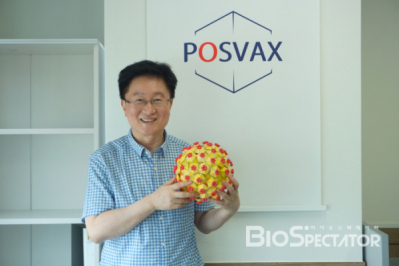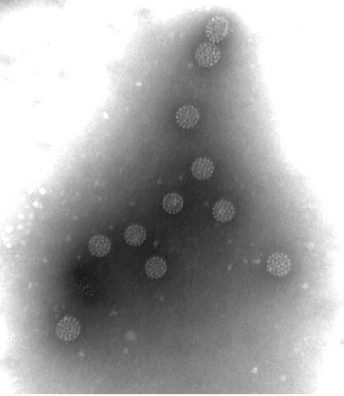뉴스 & 공지
효모 시스템 통해 우수한 VLP 대량생산 기술 확보… “HPV, RSV 등 백신 개발, DDS로 활용 가능“….50억 규모 시리즈A 투자 유치
페이지 정보
본문
포스백스, VLP 츨렛폼으로 “9가 HPV백신” 도전장
기사입력 : 2019-08-02
바이오스펙데이터 조정민 기자
효모 시스템 통해 우수한 VLP 대량생산 기술 확보… “HPV, RSV 등 백신 개발, DDS로
활용 가능“….50억 규모 시리즈A 투자 유치
포스백스(POSVAX)는 바이러스유사입자(VLP) 기반 플랫폼 기술을 통해 백신 개발에 도전장을 낸 바이오텍이다. 미국 와이어스(Wyeth-Ayerst, 현 화이자), 한미약품 욘구원을 거쳐 15년간 중앙대 약대에서 연구한 김홍진 교수(기술총괄)가 2018년 창업했다.
김 교수는 바이러스유사입자 생산기술을 연구, 개발해왔으며 그 결과물로 바이러스유사입자(VLP) 항원 생산 기술을 플랫폼을 구축했다. 포스백스는 이 플랫폼으로 인유두종바이러스(human papillomavirus, HPV), 호흡기세포융합 바이러스(respiratory syncytical virus, RSV), 알츠하이머 등을 타킷으로 하는 백신을 개발한다. 가장 빠르게 개발하는 파이프라인은 미국 머크(MSD)만이 상용화에 성공한 ‘9가 HPV 백신”이다.
그는 “포스백스는 바이러스유사입자를 구조적으로 안정성이 높은 형태로 조립하는 기술 노하우를 보유하고 있다”면서 “이을 통해 전세계적으로 후발주자 없는 9가 HPV백신을 먼저 개발해 국내외 시장에 진출할 계획”이라고 말했다.
포스백스는 최근 창업 11개월만에 50억원 규모의 시리즈A 투자를 성공적으로 유치했다. 이번 투자에는 AF인베스트먼트, 키움인베스트먼트, 아주IB투자, 에이치비인베스트먼트가 참여했다.
POSVAX Challenges Development of '9-valent HPV Vaccine' with VLP Platform
by Joungmin Cho, BIOSEPCTATOR(http://m.biospectator.com/), 2019-08-20
Securing mass production technology of excellent VLPs through yeast system: vaccine development of vaccines for HPV and RSV and application as DDS

▲Kim Hong-Jin, founder of POSVAX
POSVAX is a biotech challenging vaccine development based on VLP-based platform technology. The bio-company was founded by Prof. Kim Hong-Jin (General Manager of Technology) who worked as a researcher at Wyeth-Ayerst (currently, Pfizer) and Hanmi Pharmaceuticals, and at the College of Medicine at Chung-Ang University for 15 years.
Prof. Kim has been engaged in research and development of virus-like particle (VLP) production technology, and as a result, he is working towards establishing a platform for producing VLPs. Based on this platform, POSVAX is developing vaccines for human papillomavirus (HPV), respiratory syncytial virus (RSV), and Alzheimer's.
He said, “POSVAX has a technical know-how to assemble VLPs with high structural stability. Through this technology, we are going to develop 9-valent HPV vaccines first to enter domestic and overseas markets where there are no late movers.”
◇ 'VLP,' indistinguishable from viruses, is ggaining attention as the next generation vaccine platform.
The VLPs are of multiple protein nanostructures comprised of viral proteins. Virus-like particles have sophisticated structural characteristics that are almost indistinguishable from those of native virions when observed under an electron microscope.
As VLPs do not contain viral gene but consist of high-density viral surface proteins, they are useful for vaccine production. In particular, since they retain the function of penetrating into cells freely like virus, a vaccine can have good penetration efficiency into the cell.
Additionally, the advantage of VLPs is that they are infection-incompetent and highly stable and also that they have high immunogenicity. Existing vaccines use inactivated viruses, but in the case of VLPs, the virus’ genes are removed, which makes a vaccine much safer than previous vaccines in terms of infection risk. Additionally, they have a multi-atomic structure that activates immune cells through multiple replication of antigens.
The first step towards making VLPs is to clone and express genes of viral structural proteins. Cell culture systems used to produce VLPs can be mainly divided into three kinds such as bacteria, cell lines, and yeast.

▲VLP(Virus like particle)
◇ Establishment of VLP antigen production platform: the yeast system capable of mass-producing effective VLPs
POSVAX chose the yeast system, with commercialization in mind from the platform technology R&D stage. Prof. Kim said, “If you don’t consider commercialization from the beginning of research, it becomes difficult to make a small change once the technology development is finished. And we’ve seen many cases of commercialization encountering frustration for this reason. That is why we considered commercialization from the very beginning and chose to develop technology based on the yeast system.”
POSVAX’s platform technology is capable of producing high-purity viral capsid proteins out of yeast. Prof. Kim said, “The produced capsid proteins have a sphere-shaped tertiary structure. A total of 360 antigenic epitopes must form a perfect sphere shape to become an effective vaccine. If it is mixed with even traces of other types of protein, it cannot form a completed tertiary structure. Thus, it is difficult to produce an expected level of therapeutic effect. Therefore, the core of the technology is to make such a complete spherical structure in a constant and sophisticated manner.” POSVAX has secured production and purification technology to obtain high purity proteins, which has dramatically increased the yield of VLP particles.
◇ Development of 'lead pipeline' for 9-valent HPV vaccine: the company plans to enter a non-clinical trial in the second half of the year and to apply for a clinical trial in 2020.
POSVAX is developing 9-valent HPV vaccines using a platform technology.
In 2006, a VLP-based bivalent vaccine (trade name: Cervarix) and a tetravalent vaccine (trade name: Gardasil-4) that can prevent high-risk HPV were commercialized. However, in terms of efficacy, they could prevent approximately 70% of cervical cancers. There has been an unmet need for vaccines that can prevent HPV infection.
In 2015, MSD was successful in developing 9-valent vaccines (trade name: Gardasil-9) comprised of HPV types 6, 11, 16, 18, 31, 33, 45, 52, and 58 that can prevent more than 90% of cervical cancer. Prof. Kim said, “Because the antigen structure of the vaccine is complex, it requires a long period of research and a great stock of know-how to develop even a monovalent antigen. It means that there is a steep technical barrier to realizing development of a 9-valent vaccine consisting of 9 types of VLP antigens.”
POSVAX has issued the challenge of becoming the first company after MSD to develop HPV 9-valint vaccines. Prof. Kim said, “Since MSD launched 9-valent vaccines, the companies has acquired approval in 77 countries including the U.S. And countries such as the U.S. and Canada have revised the guidelines for national vaccination programs to apply 9-valent vaccines. Without 9-valent vaccines, it is difficult to enter a market.” POSVAX will advance to the 9-valent market to promote the prowess of VLP platform technology and to secure profits.
◇ VLPs with high body stability has the potential to be used as drug delivery.
POSVAX expects to use VLPs as an effective drug delivery system, because they have a high level of stability when exposed to degrading enzymes in the body and have high cell penetration rate thanks to retention of virus characteristics.
Prof. Kim said, “Because the inside of the VLP is empty, it is possible to load various types of particles such as DNA, RNA and peptides. POSVAX has various forms of VLPs and is good at screening drug carrier combinations. In the case of drug delivery system, several candidate substances are being studied. And, we expect that early value creation is possible through collaboration with domestic and overseas pharmaceutical companies or technology transfer.”
관련링크
- 이전글대전테크노파크, 포스백스와 자궁경부암 백신 개발 나서 20.04.16


